Yueming Cai
Terahertz Integrated Sensing and Communication-Empowered UAVs in 6G: A Transceiver Design Perspective
Feb 07, 2025Abstract:Due to their high maneuverability, flexible deployment, and low cost, unmanned aerial vehicles (UAVs) are expected to play a pivotal role in not only communication, but also sensing. Especially by exploiting the ultra-wide bandwidth of terahertz (THz) bands, integrated sensing and communication (ISAC)-empowered UAV has been a promising technology of 6G space-air-ground integrated networks. In this article, we systematically investigate the key techniques and essential obstacles for THz-ISAC-empowered UAV from a transceiver design perspective, with the highlight of its major challenges and key technologies. Specifically, we discuss the THz-ISAC-UAV wireless propagation environment, based on which several channel characteristics for communication and sensing are revealed. We point out the transceiver payload design peculiarities for THz-ISAC-UAV from the perspective of antenna design, radio frequency front-end, and baseband signal processing. To deal with the specificities faced by the payload, we shed light on three key technologies, i.e., hybrid beamforming for ultra-massive MIMO-ISAC, power-efficient THz-ISAC waveform design, as well as communication and sensing channel state information acquisition, and extensively elaborate their concepts and key issues. More importantly, future research directions and associated open problems are presented, which may unleash the full potential of THz-ISAC-UAV for 6G wireless networks.
Channel Estimation for Movable-Antenna MIMO Systems Via Tensor Decomposition
Jul 26, 2024
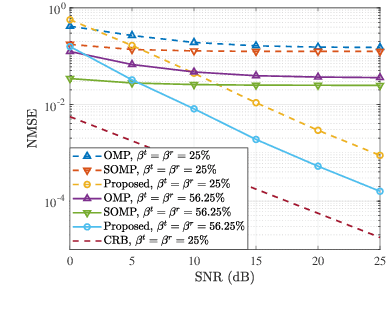
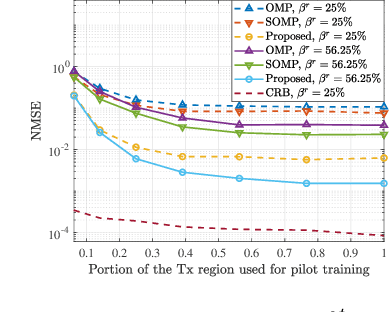
Abstract:In this letter, we investigate the channel estimation problem for MIMO wireless communication systems with movable antennas (MAs) at both the transmitter (Tx) and receiver (Rx). To achieve high channel estimation accuracy with low pilot training overhead, we propose a tensor decomposition-based method for estimating the parameters of multi-path channel components, including their azimuth and elevation angles, as well as complex gain coefficients, thereby reconstructing the wireless channel between any pair of Tx and Rx MA positions in the Tx and Rx regions. First, we introduce a two-stage Tx-Rx successive antenna movement pattern for pilot training, such that the received pilot signals in both stages can be expressed as a third-order tensor. Then, we obtain the factor matrices of the tensor via the canonical polyadic decomposition, and thereby estimate the angle/gain parameters for enabling the channel reconstruction between arbitrary Tx/Rx MA positions. In addition, we analyze the uniqueness condition of the tensor decomposition, which ensures the complete channel reconstruction between the whole Tx and Rx regions based on the channel measurements at only a finite number of Tx/Rx MA positions. Finally, simulation results are presented to evaluate the proposed tensor decomposition-based method as compared to existing methods, in terms of channel estimation accuracy and pilot overhead.
Resource Allocation and Passive Beamforming for IRS-assisted URLLC Systems
Apr 17, 2023Abstract:In this correspondence, we investigate an intelligent reflective surface (IRS) assisted downlink ultra-reliable and low-latency communication (URLLC) system, where an access point (AP) sends short packets to multiple devices with the help of an IRS. Specifically, a performance comparison between the frequency division multiple access (FDMA) and time division multiple access (TDMA) is conducted for the considered system, from the perspective of average age of information (AoI). Aiming to minimize the maximum average AoI among all devices by jointly optimizing the resource allocation and passive beamforming. However, the formulated problem is difficult to solve due to the non-convex objective function and coupled variables. Thus, we propose an alternating optimization based algorithm by dividing the original problem into two sub-problems which can be efficiently solved. Simulation results show that TDMA can achieve lower AoI by exploiting the time-selective passive beamforming of IRS for maximizing the signal to noise ratio (SNR) of each device consecutively. Moreover, it also shows that as the length of information bits becomes sufficiently large as compared to the available bandwidth, the proposed FDMA transmission scheme becomes more favorable instead, due to the more effective utilization of bandwidth.
The Learning and Prediction of Application-level Traffic Data in Cellular Networks
Mar 28, 2017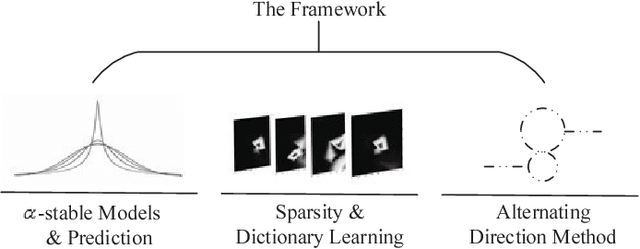
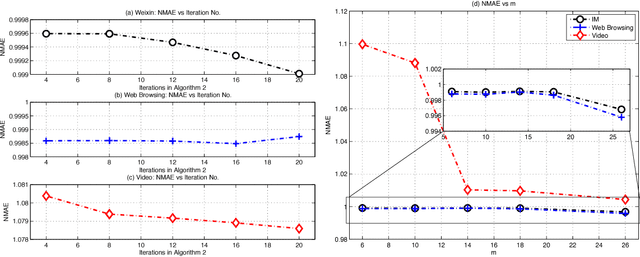
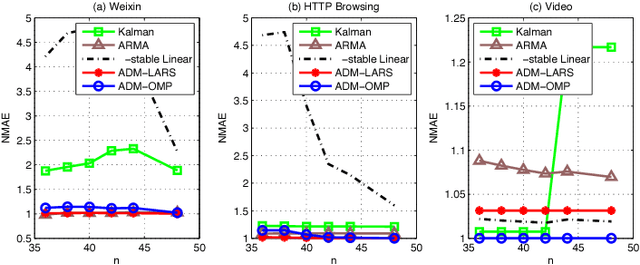

Abstract:Traffic learning and prediction is at the heart of the evaluation of the performance of telecommunications networks and attracts a lot of attention in wired broadband networks. Now, benefiting from the big data in cellular networks, it becomes possible to make the analyses one step further into the application level. In this paper, we firstly collect a significant amount of application-level traffic data from cellular network operators. Afterwards, with the aid of the traffic "big data", we make a comprehensive study over the modeling and prediction framework of cellular network traffic. Our results solidly demonstrate that there universally exist some traffic statistical modeling characteristics, including ALPHA-stable modeled property in the temporal domain and the sparsity in the spatial domain. Meanwhile, the results also demonstrate the distinctions originated from the uniqueness of different service types of applications. Furthermore, we propose a new traffic prediction framework to encompass and explore these aforementioned characteristics and then develop a dictionary learning-based alternating direction method to solve it. Besides, we validate the prediction accuracy improvement and the robustness of the proposed framework through extensive simulation results.
 Add to Chrome
Add to Chrome Add to Firefox
Add to Firefox Add to Edge
Add to Edge